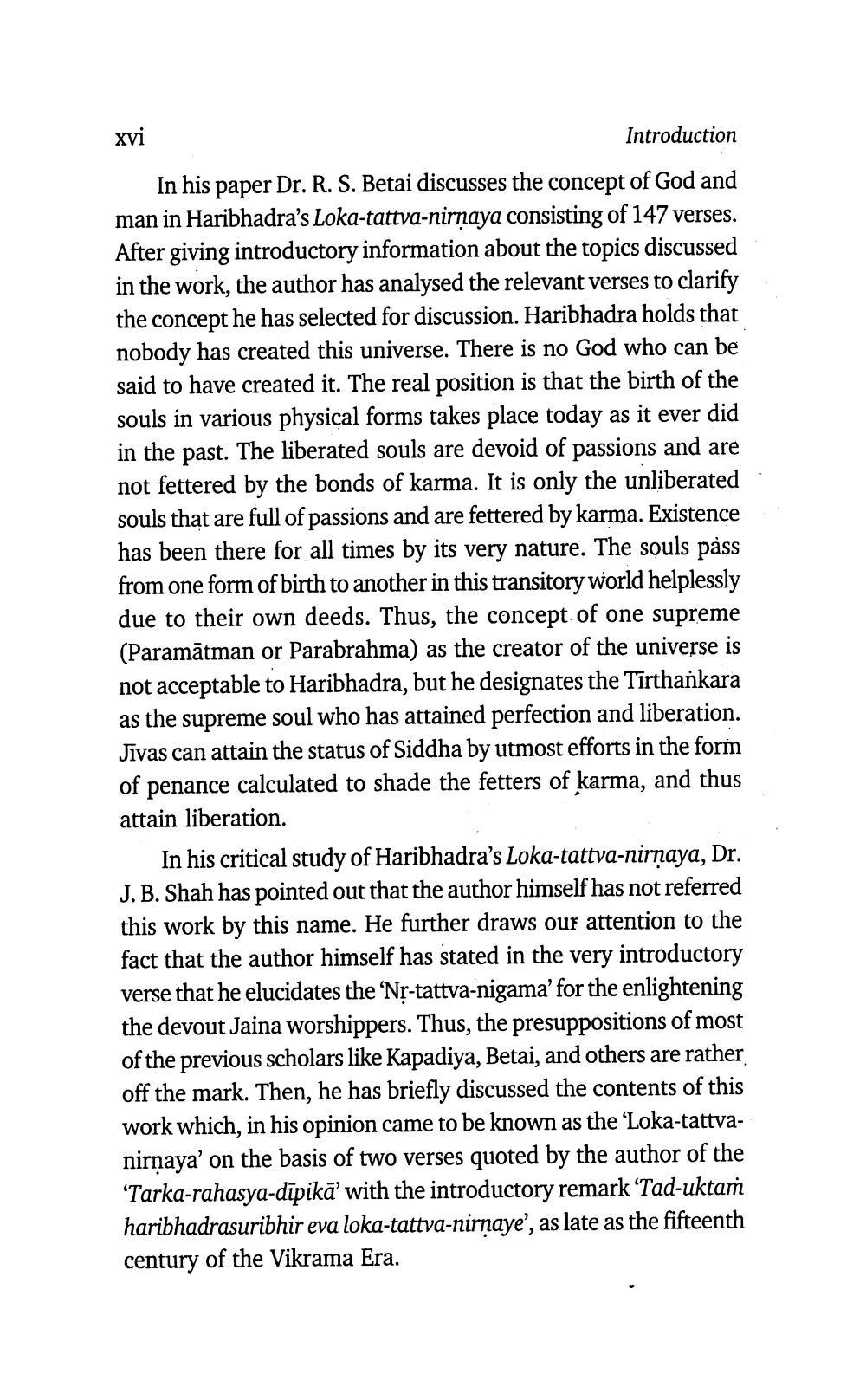________________
хуі
Introduction In his paper Dr. R. S. Betai discusses the concept of God and man in Haribhadra's Loka-tattva-nirņaya consisting of 147 verses. After giving introductory information about the topics discussed in the work, the author has analysed the relevant verses to clarify the concept he has selected for discussion. Haribhadra holds that nobody has created this universe. There is no God who can be said to have created it. The real position is that the birth of the souls in various physical forms takes place today as it ever did in the past. The liberated souls are devoid of passions and are not fettered by the bonds of karma. It is only the unliberated souls that are full of passions and are fettered by karma. Existence has been there for all times by its very nature. The souls pass from one form of birth to another in this transitory world helplessly due to their own deeds. Thus, the concept of one supreme (Paramātman or Parabrahma) as the creator of the universe is not acceptable to Haribhadra, but he designates the Tirthankara as the supreme soul who has attained perfection and liberation. Jivas can attain the status of Siddha by utmost efforts in the form of penance calculated to shade the fetters of karma, and thus attain liberation.
In his critical study of Haribhadra's Loka-tattva-nirnaya, Dr. J. B. Shah has pointed out that the author himself has not referred this work by this name. He further draws our attention to the fact that the author himself has stated in the very introductory verse that he elucidates the ‘Nș-tattva-nigama' for the enlightening the devout Jaina worshippers. Thus, the presuppositions of most of the previous scholars like Kapadiya, Betai, and others are rather off the mark. Then, he has briefly discussed the contents of this work which, in his opinion came to be known as the ‘Loka-tattvanirnaya' on the basis of two verses quoted by the author of the 'Tarka-rahasya-dīpikā' with the introductory remark “Tad-uktam haribhadrasuribhir eva loka-tattva-nirnaye', as late as the fifteenth century of the Vikrama Era.




